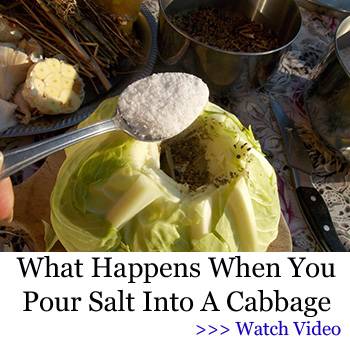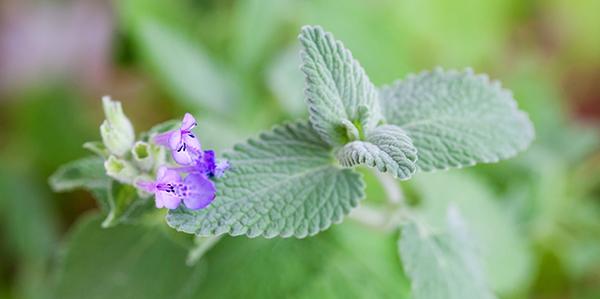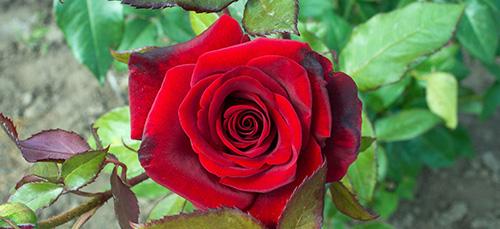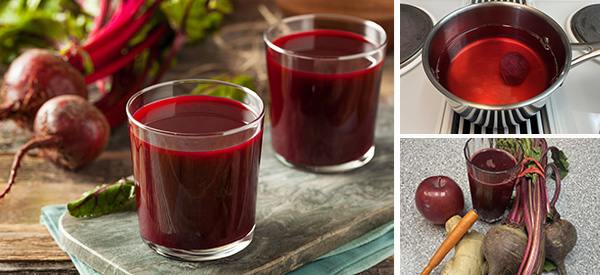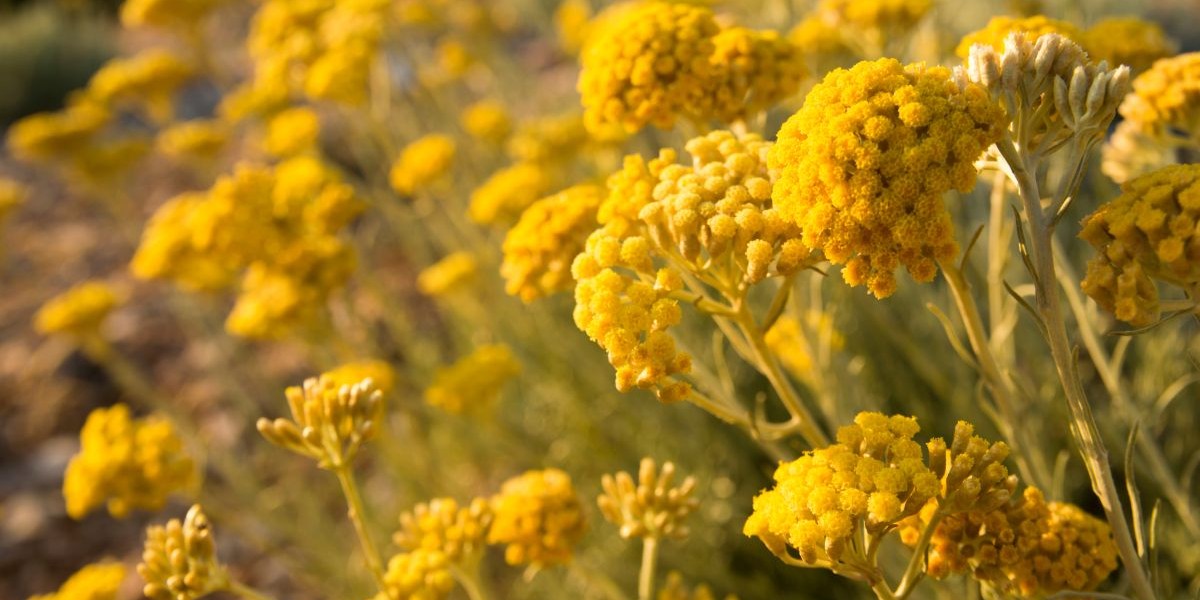
Everlasting Flower (Immortelle)
Everlasting (often called immortelle) is a sunny, resinous-flowered plant prized in folk medicine and gentle skincare.
Plant profile
- Common names: Everlasting, Immortelle, Immortelle flower.
- Typical species used: Helichrysum italicum (Mediterranean immortelle), Helichrysum stoechas, and related Helichrysum species; note that some gardeners call the strawflower (Xerochrysum bracteatum) an “everlasting” as well. Everlasting plants are usually small, aromatic shrubs or herbaceous perennials with clusters of papery, long-lasting yellow (or sometimes white) flowers and sticky, resinous leaves. They favour well-drained, sunny sites and are drought tolerant once established.
Everlasting’s charm is both botanical and practical: the flowers hold their shape and color when dried (hence the name), and the plants concentrate aromatic resins that carry both scent and medicinal activity. In the garden they make steady, low-water borders; in the apothecary they offer gentle topical support.
Traditional benefits & modern uses
- Skin and wound care: Everlasting has a long reputation for soothing skin, helping with minor wounds, calming inflammation, and speeding the settling of bruises. Its resinous compounds make it useful in compresses, infused oils, and gentle salves.
- Anti-inflammatory and antioxidant actions: The plant contains compounds that support topical calming and cellular protection. These properties are why immortelle appears in small amounts in wound-balms and restorative skin blends.
- Aromatic and comforting uses: The warm, resinous scent is used in small-scale aromatherapy or blended into facial oils for its grounding aroma and restorative associations.
- Traditional digestive uses (measured): Certain Helichrysum species have been used historically for mild digestive complaints and liver-supporting applications, though these are less common in modern home practice and should be approached with caution.
While everlasting is not a miracle cure, it is a reliably gentle addition to a home medicine chest when used with respect for dilution and sourcing.
Plant parts used
- Flowers (fresh or dried): the most commonly used part for infusions, compresses, infused oils, and gentle topical preparations.
- Aerial parts: occasionally used in folk formulas or mild decoctions where the whole flowering top is desired.
- Essential oil: distilled from fresh flowers and used in tiny amounts for skin care and aromatic applications. The oil is concentrated and must be handled with care — often reserved for experienced herbalists and professional formulations.
Each preparation — infusion, oil, or distilled essence — concentrates different aspects of the plant. Infusions capture water-soluble, gently aromatic, and slightly astringent notes; oils draw out resinous, skin-loving compounds; essential oil concentrates volatile constituents that are powerful and require low-percentage dilution.
Safety & cautions
- Dilution matters: essential oil is potent — always dilute before applying to skin. A common practice is 0.5–2% dilution in a carrier oil for facial or wound applications. For small-area wound care, stay at the low end and patch-test first.
- Patch-test before wide use: apply a diluted amount to the inside of the wrist or elbow and wait 24 hours to check for irritation.
- Not a substitute for professional care: for deep wounds, infected skin, systemic infections, or serious conditions, seek medical attention rather than relying on plants alone.
- Allergies & sensitivity: some people may react; if redness, burning, or persistent irritation occurs, stop use.
- Pregnancy & nursing: err on the side of caution. While topical uses in low concentration are often tolerated, consult a healthcare provider for specific guidance.
These cautions aren’t meant to frighten — they’re practical guardrails that keep herbal practice safe and effective.
 How to prepare — gentle topical infusion & soothing compress
How to prepare — gentle topical infusion & soothing compress
Everlasting Compress (for minor skin irritation or bruising)
Ingredients:
- 1–2 tablespoons dried everlasting flowers (or a handful fresh)
- 1 cup just-boiled water
- Clean cloth
Method:
- Steep the flowers in the hot water for 10–15 minutes. Cover the vessel so volatile aromatics are retained.
- Strain the infusion through a fine sieve or cloth into a clean bowl. Press the plant material gently to recover as much liquid as possible.
- Let the liquid cool to a warm, comfortable temperature. Test on your wrist before applying.
- Soak a clean cloth in the infusion, wring it lightly, and apply as a compress for 10–20 minutes. Repeat 2–3 times daily as needed.
Alternatives & notes:
- For a longer-lasting topical, make an infused oil: pack fresh or dried flowers in a clean jar, cover with a neutral carrier oil (like sweet almond or olive oil), and gently warm in a sunny window for 2–6 weeks or use a warm-water bath to speed infusion. Strain and bottle. Infused oil can be made into a salve by blending with beeswax.
- If using essential oil, add 2–6 drops to 1 oz (30 mL) carrier oil for a topical supportive blend — never use undiluted.
- For bruises, a layered approach works well: cool compresses the first day to reduce swelling, then warm everlasting compresses to encourage circulation and healing on subsequent days.
Foraging & identification
- When to pick: When foraging everlasting, aim for flowers at peak bloom on a dry day so the papery bracts and resinous petals are clean and aromatic. Harvest in the morning after dew has dried but before the heat of midday evaporates volatile compounds.
- How to identify: look for low, shrubby growth with narrow, often grey-green or sticky leaves and dense clusters of papery, long-lasting flower heads (usually yellow in italicum). The crushed leaves often smell warm and resinous — this aroma is a useful identification cue. Distinguish true Helichrysum species from ornamental “everlastings” like strawflower by leaf shape, scent, and texture.
Foraging tips:
- Collect from pesticide-free areas and away from busy roads, industrial runoff, or contaminated soils.
- Take only what you need; leave enough plant material for pollinators and seed production.
- Use clean scissors or snips, and place flowers loosely in a breathable basket or paper bag to avoid crushing them.
Ethical foraging means knowing the landscape: if the population seems thin, move on. Always prioritize habitat health over a single harvest.
 How to grow
How to grow
- Site & soil: full sun, very well-drained soil (rocky or sandy mixes are ideal). Poor, lean soils often produce more aromatic, resin-rich plants than overly rich conditions. Avoid heavy clay and waterlogged sites.
- Hardiness & zones: many Helichrysum species prefer warm, temperate climates and mild winters; select cultivars adapted to your microclimate and protect roots in colder zones.
- Planting & spacing: give plants 12–24 inches (30–60 cm) depending on variety and form. Good air circulation reduces fungal issues.
- Propagation: seed, softwood cuttings in spring, or division for clumping forms. Cuttings taken in late spring root readily when kept warm and slightly moist.
- Care: minimal once established — light pruning after flowering to keep plants compact, occasional compost top-dress in spring, and cautious watering; these plants resent constant moisture. Mulch with gravel or coarse material to improve drainage and reflect heat.
- Pests & problems: generally pest-resistant due to aromatic resins, though slugs and snails can occasionally bother young growth. Watch for root rot in poorly drained soils.
Growing everlasting rewards patience: a small, sun-loving shrub that adds texture to borders and steady harvests for the apothecary.
Similar plants — quick comparison
| Plant | Key ID features | Notes |
| Helichrysum italicum (Immortelle) | Low aromatic shrub, yellow papery flower clusters, resinous scent | Medicinal and cosmetic use; prized for essential oil. |
| Helichrysum bracteatum (Strawflower / Xerochrysum) | Papery bracts, broad color range, often used dried in crafts | Often called “everlasting” in horticulture; useful, but different traditional uses. |
| Anaphalis margaritacea (Pearly everlasting) | Smaller white papery flower clusters, silvery foliage | Used ornamentally and sometimes in folk remedies — different chemistry. |
| Santolina / Lavender | Grey foliage, aromatic, yellow button flowers (santolina) | Similar drought tolerance and Mediterranean habit; different medicinal profile. |
When foraging or gardening, cross-check leaf shape, scent, and flower structure. Many plants carry the common name “everlasting” but differ in chemistry and uses — positive ID matters.
Storage & preservation
- Drying: hang small bunches upside down in a warm, well-ventilated, dark place. Papery bracts hold color well when dried properly. Spread flowers on screens if air circulation is limited.
- Infused oils: make small batches and store in dark glass bottles in a cool place; label with date and plant source. Use within 6–12 months for best aroma and activity.
- Essential oil: store in dark amber bottles, cool and away from light; essential oils can last several years if pure and properly stored, but potency will fade over time.
- Long-term storage: dried flowers in airtight jars away from heat and light retain useful properties for many months — check scent and appearance before use.
Final thoughts
Everlasting is a subtle, practical plant — not a cure-all, but a reliable ally for gentle skin care, minor topical support, and the kind of small, useful remedies that fit a home apothecary. Respect the plant’s potency (especially the essential oil), work with measured preparations, and prioritize clean sourcing. In the garden it rewards sensible placement and lean soil; in the kitchen or apothecary it rewards patience and modesty.
If you want to go deeper
The Forgotten Home Apothecary collects careful, practical recipes and safety notes for plants like everlasting. It walks you step-by-step through infusion ratios, topical formulas, harvest timing, and troubleshooting so you can use these herbs with confidence and care. If you liked this primer, the book expands the recipes above, offers printable recipe cards, and gives field-friendly checklists to help you harvest, preserve, and use your harvest wisely.
You May Also Like:
7 Plants To Manage Your Chronic Inflammation
How to Recognize a Heart Attack and What to Do Next (Video)
Parsley Tea for Inflammation of The Urinary Tract

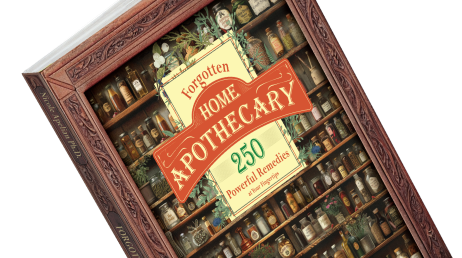






 How to prepare — gentle topical infusion & soothing compress
How to prepare — gentle topical infusion & soothing compress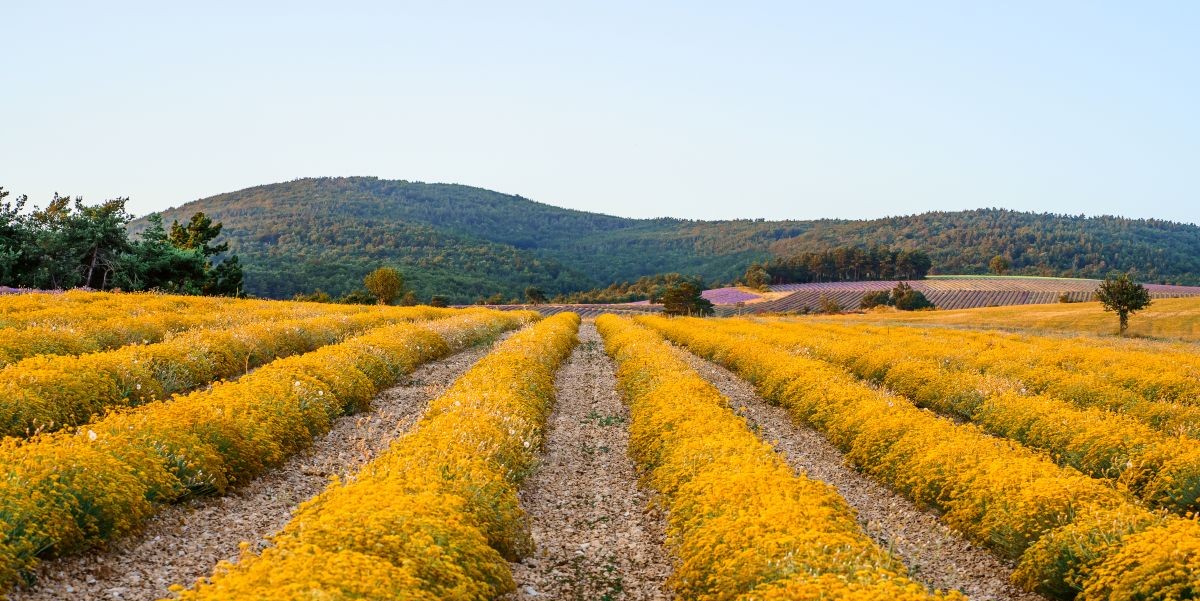 How to grow
How to grow